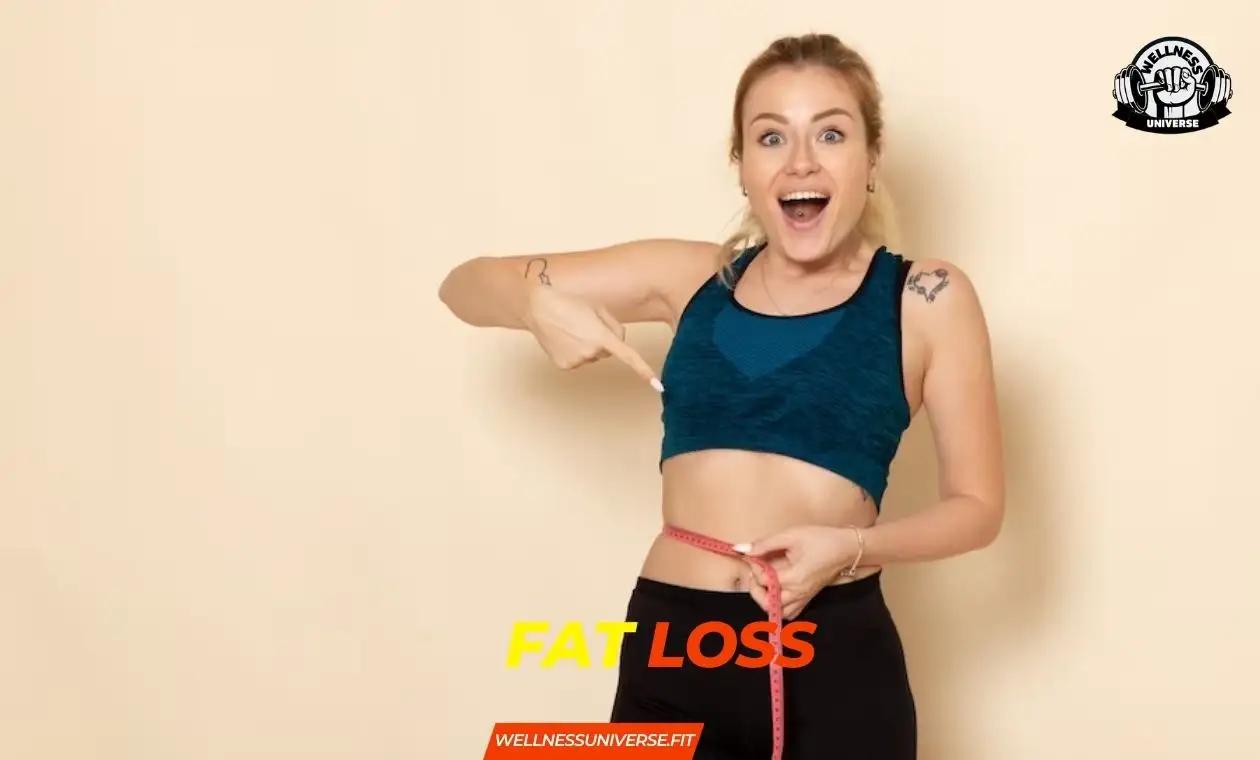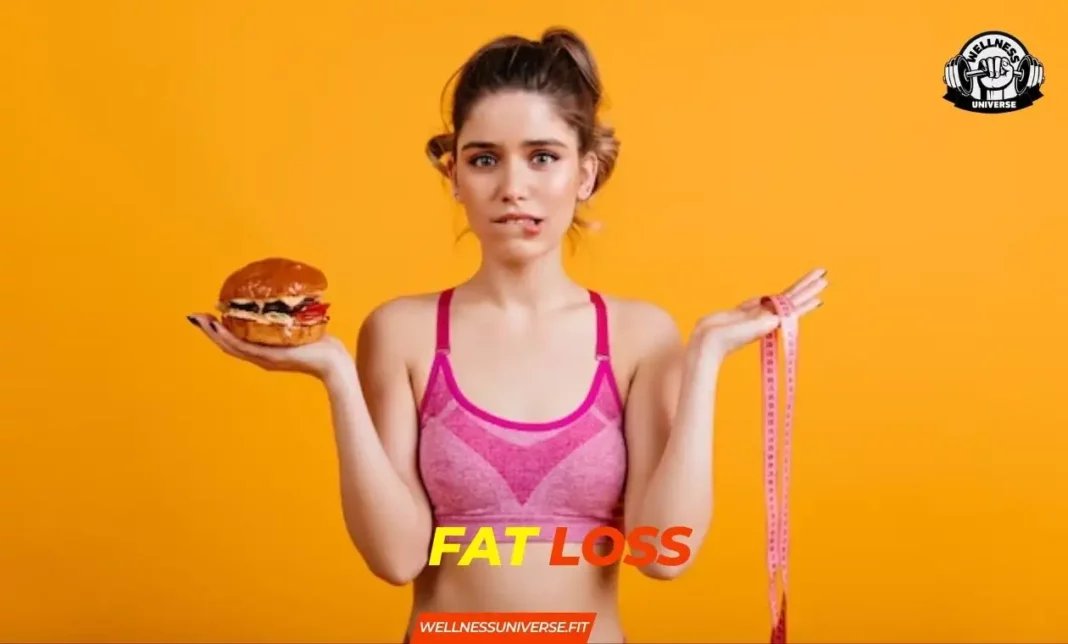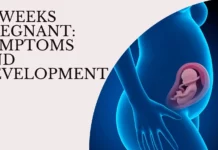When it comes to fitness goals, getting lean is a common aspiration for many individuals. The term “getting lean” refers to the process of reducing body fat while preserving or building lean muscle mass. Achieving a lean physique not only enhances physical appearance but also contributes to overall health and well-being. A lean body is characterized by a low body fat percentage and a toned, defined musculature.
To successfully embark on a journey to get lean, it is crucial to have a solid understanding of the principles and strategies involved. Getting lean involves more than simply losing weight. It requires a combination of proper nutrition, effective training methods, and lifestyle adjustments. By gaining knowledge about the factors that contribute to getting lean, individuals can make informed decisions and implement strategies that align with their goals.
In this blog, we will delve into various aspects of getting lean, providing a comprehensive guide to help you achieve your desired results. We will explore topics such as the best approaches to fat loss, optimal nutrition for getting lean, effective training techniques, the role of cardio, common mistakes to avoid, and strategies for staying motivated throughout the process. Additionally, we will discuss the importance of genetics and provide insights on how to maintain a lean physique once it is achieved.
By the end of this blog, you will have a solid understanding of what it takes to get lean and be equipped with the knowledge to embark on your own transformation journey. So, let’s dive in and explore the world of getting lean!
What Does It Mean to Get Lean?

Getting lean refers to the process of reducing body fat while maintaining or building lean muscle mass. It involves achieving a favorable body composition where the body fat percentage is relatively low, and the muscles are well-defined and toned. The primary goal of getting lean is to improve overall body composition by reducing excess body fat and increasing muscle definition.
It’s important to note that getting lean is different from simply losing weight. Weight loss focuses solely on reducing overall body weight, which can include both fat and muscle mass. On the other hand, getting lean is more specific and involves targeting body fat while preserving or increasing lean muscle mass. The emphasis is on reshaping the body, improving muscle tone, and achieving a more defined physique.
Getting lean encompasses several desired outcomes that contribute to an aesthetically pleasing and healthier physique. These outcomes include:
- Reduced body fat: By following a proper nutrition plan and incorporating effective training methods, the body fat percentage can be lowered, resulting in a leaner appearance. Reduced body fat not only enhances physical appearance but also improves overall health and reduces the risk of certain diseases.
- Improved muscle definition: Getting lean involves building and toning muscle mass to enhance muscle definition. Through targeted resistance training exercises and a well-rounded training program, individuals can develop lean muscle, giving their body a more sculpted and athletic look.
- Increased metabolic efficiency: Building and maintaining lean muscle mass can increase metabolic rate, which refers to the number of calories the body burns at rest. This can aid in weight management and make it easier to maintain a lean physique in the long run.
- Enhanced athletic performance: Getting lean can improve athletic performance by increasing strength, power, and endurance. With reduced body fat and improved muscle function, individuals may experience better overall physical performance in various activities and sports.
By understanding these desired outcomes of getting lean, individuals can set realistic goals and tailor their approach to nutrition and training to achieve the desired results.
Losing Body Fat and Getting Lean
One of the fundamental principles of losing body fat and getting lean is creating a calorie deficit. This means consuming fewer calories than your body needs for maintenance, which forces it to tap into stored fat for energy. When you consistently maintain a calorie deficit, your body starts using stored fat as fuel, leading to a reduction in overall body fat.
Nutrition plays a crucial role in getting lean. While there isn’t a one-size-fits-all approach, several dietary strategies can support fat loss and help achieve a lean body. Here are some key points to consider:
- Balanced macronutrient distribution: Focus on a balanced intake of macronutrients, including protein, carbohydrates, and healthy fats. Protein is particularly important for preserving and building lean muscle mass, while carbohydrates provide energy for workouts and overall functioning. Healthy fats help regulate hormones and support overall health.
- Prioritize whole, nutrient-dense foods: Emphasize whole foods that are minimally processed and rich in nutrients. These include lean proteins, vegetables, fruits, whole grains, nuts, and seeds. Such foods provide essential vitamins, minerals, and fiber, while being generally lower in calories and higher in satiety.
- Manage portion sizes: Portion control is essential for achieving a calorie deficit. Pay attention to portion sizes and consider using tools like measuring cups, food scales, or visual cues to ensure you’re consuming appropriate amounts. Be mindful of calorie-dense foods and limit their intake to avoid exceeding your calorie goals.
To support fat loss and get lean, consider the following tips:
- Increase protein intake: Include protein-rich foods such as lean meats, poultry, fish, eggs, dairy products, legumes, and tofu in your meals. Protein helps preserve muscle mass, promotes satiety, and has a higher thermic effect, meaning it requires more energy to digest.
- Include plenty of vegetables: Load your plate with non-starchy vegetables like leafy greens, broccoli, cauliflower, peppers, and asparagus. These are low in calories but rich in fiber, vitamins, and minerals, making them a great choice for filling up without adding excess calories.
- Opt for whole grains: Choose whole grains like quinoa, brown rice, oats, and whole wheat bread over refined grains. Whole grains offer more fiber and nutrients, which can help with satiety and overall health.
- Moderate healthy fats: Include sources of healthy fats such as avocados, nuts, seeds, olive oil, and fatty fish like salmon. These fats provide essential nutrients and help you feel satisfied.
- Mindful eating and portion control: Practice mindful eating by paying attention to hunger and fullness cues. Slow down while eating, savor each bite, and listen to your body’s signals of satisfaction. Additionally, using smaller plates, bowls, and utensils can help manage portion sizes.
Creating a sustainable eating plan is crucial for long-term success in getting lean. Here are some strategies to consider:
- Set realistic goals: Set achievable and realistic goals for fat loss and overall body composition changes. Gradual, steady progress is more sustainable and allows forbetter adherence to the plan.
- Find a sustainable approach: Choose an eating plan that you enjoy and can maintain in the long run. Avoid extreme and overly restrictive diets that may lead to feelings of deprivation or hinder your ability to meet your nutritional needs.
- Plan and prepare meals: Take the time to plan your meals in advance and prepare them at home whenever possible. This allows you to have better control over the ingredients and portion sizes. Batch cooking and meal prepping can be helpful strategies to ensure you have nutritious meals readily available throughout the week.
- Listen to your body: Pay attention to your body’s hunger and fullness cues. Eat when you’re hungry and stop when you’re satisfied. Avoid mindless eating and emotional eating by staying present during meals and focusing on the nourishment and enjoyment of food.
- Stay hydrated: Adequate hydration is essential for overall health and can support your weight loss efforts. Drink plenty of water throughout the day and limit your consumption of sugary beverages and calorie-laden drinks.
- Allow for flexibility: It’s important to strike a balance between staying disciplined and allowing yourself flexibility in your eating plan. Occasional indulgences or planned “cheat meals” can help satisfy cravings and prevent feelings of deprivation. Just be mindful of portion sizes and frequency.
- Seek professional guidance: If you find it challenging to create a sustainable and balanced eating plan on your own, consider consulting with a registered dietitian or nutritionist. They can provide personalized guidance, help you set realistic goals, and tailor an eating plan to your specific needs and preferences.
By implementing these strategies, you can create a sustainable and balanced eating plan that supports your fat loss goals while preserving lean muscle mass. Remember, it’s important to be patient and consistent in your efforts, as sustainable changes take time.
The Role of Cardio in Getting Lean
Cardiovascular exercise, also known as cardio, plays a significant role in getting lean by contributing to calorie burning and promoting fat loss. Engaging in regular cardio workouts offers a multitude of benefits that can enhance your overall body composition and help you achieve a lean physique.
First and foremost, cardio helps to increase energy expenditure, leading to a calorie deficit, which is essential for fat loss. When you perform cardio exercises, your body requires more energy, and as a result, it taps into its fat stores to meet the increased energy demands. This, in turn, can lead to a reduction in body fat and a leaner appearance.
Cardio exercises elevate your heart rate and breathing rate, increasing the efficiency of your cardiovascular system. As a result, your body burns calories at a higher rate during the workout and continues to burn calories even after you’ve finished exercising. This phenomenon, known as excess post-exercise oxygen consumption (EPOC), or the “afterburn effect,” can help boost your metabolism and contribute to fat loss.
Furthermore, cardio workouts increase the body’s overall energy expenditure, as they engage large muscle groups and require sustained effort over an extended period. Activities such as running, cycling, swimming, and aerobic classes are excellent examples of cardio exercises that can help you burn calories and shed excess body fat.
There are various types of cardio workouts, and each offers its unique benefits when it comes to getting lean. Some popular options include:
- High-Intensity Interval Training (HIIT): HIIT involves alternating periods of intense exercise with short recovery periods. It is highly effective for fat loss as it maximizes calorie burn and boosts metabolism both during and after the workout.
- Steady-State Cardio: Steady-state cardio refers to maintaining a steady pace of moderate intensity throughout the exercise session. This type of cardio is beneficial for building endurance and burning calories.
- Circuit Training: Circuit training combines cardio exercises with strength training exercises, providing a dual benefit of cardiovascular conditioning and muscle toning. It can be an effective way to improve overall fitness while promoting fat loss.
- Outdoor Activities: Engaging in outdoor activities such as hiking, biking, or playing sports not only provides cardiovascular benefits but also adds an element of enjoyment and variety to your workout routine.
The choice of cardio workouts depends on personal preferences, fitness levels, and goals. Incorporating a mix of different cardio exercises into your routine can help prevent boredom and provide a well-rounded approach to getting lean.
To maximize the benefits of cardio in getting lean, it’s essential to integrate it into a well-rounded fitness routine. While cardio is effective for calorie burning and fat loss, combining it with strength training exercises is highly recommended.
Strength training helps build lean muscle mass, which can contribute to a more toned and defined appearance. It also increases your metabolic rate, as muscles require more energy at rest compared to fat tissue. By incorporating strength training exercises, such as weightlifting, bodyweight exercises, or resistance training, alongside your cardio workouts, you can create a balanced routine that promotes both fat loss and muscle development.
Additionally, don’t forget to include rest and recovery days in your fitness plan. Adequate rest allows your body to repair and rebuild muscle tissue, which is crucial for achieving a lean physique.
By integrating cardio exercises into a well-rounded fitness routine that includes strength training and rest days, you can optimize your fat loss efforts and work towards achieving a lean body. Remember to choose activities that you enjoy and gradually increase the intensity and duration of your cardio sessions as your fitness level improves. It’s important to listen to your body and avoid overtraining, as excessive cardio without proper recovery can lead to negative effects such as muscle loss or increased risk of injury.
In addition to the physical benefits, cardio workouts also provide mental and emotional benefits. Regular aerobic exercise releases endorphins, which are known as “feel-good” hormones, promoting a positive mood and reducing stress levels. This can be particularly helpful during the journey of getting lean, as it can be challenging both physically and mentally.
To integrate cardio effectively into your fitness routine, consider the following tips:
- Set realistic goals: Define your specific goals for getting lean, whether it’s losing a certain amount of body fat or improving cardiovascular fitness. This will help you tailor your cardio workouts to align with your objectives.
- Choose activities you enjoy: Engage in cardio exercises that you find enjoyable and sustainable. This will make it easier to stick to your routine in the long run.
- Gradually increase intensity and duration: Start with manageable levels of intensity and duration, especially if you’re new to cardio exercise. As your fitness improves, gradually increase the intensity or duration of your workouts to continue challenging your body.
- Mix it up: Avoid monotony by incorporating a variety of cardio exercises into your routine. Try different activities, such as cycling, swimming, dancing, or using cardio machines at the gym, to keep your workouts exciting and engaging.
- Consider incorporating HIIT: High-Intensity Interval Training (HIIT) is a time-efficient method that can provide significant cardiovascular benefits in a shorter amount of time. It involves short bursts of intense exercise followed by brief recovery periods.
- Listen to your body: Pay attention to your body’s signals and adjust your cardio routine accordingly. If you experience pain or discomfort, reduce the intensity or duration of your workouts, and seek guidance from a fitness professional if needed.
Remember that consistency is key when it comes to achieving a lean body. Aim for at least 150 minutes of moderate-intensity cardio exercise or 75 minutes of vigorous-intensity cardio exercise per week, as recommended by health guidelines. However, the specific duration and intensity may vary depending on individual factors such as fitness level, goals, and preferences.
By integrating cardio into your fitness routine, you can enhance fat loss, improve cardiovascular health, and experience the many benefits associated with regular aerobic exercise. It’s important to find a balance between cardio, strength training, and rest to optimize your results and maintain a sustainable approach to getting lean.
In Crux
Throughout this blog, we have explored the concept of getting lean and provided you with valuable insights and strategies to achieve your goals. We started by defining what it means to get lean and how it relates to body composition. We clarified that getting lean is not just about losing weight but rather about reducing body fat and improving muscle definition.
We then delved into the importance of creating a calorie deficit for fat loss and discussed the role of nutrition in getting lean. We emphasized the significance of incorporating whole, nutrient-dense foods into your diet while managing portion sizes. By following a balanced eating plan and creating a sustainable approach, you can support fat loss while preserving lean muscle mass.
In addition, we explored the role of cardio exercise in a lean body transformation. We highlighted the benefits of cardio in burning calories and promoting fat loss. We discussed different types of cardio workouts and provided tips for integrating cardio into a well-rounded fitness routine.
Embarking on the journey to get lean requires dedication, commitment, and patience. It’s important to remember that achieving a lean body is not an overnight process but rather a long-term commitment to your health and well-being. It requires consistency and a mindset focused on sustainable practices.
Rather than seeking quick fixes or crash diets, we encourage you to embrace a holistic approach to getting lean. Adopt a positive mindset, celebrate small victories along the way, and remember that every step forward is progress. Stay motivated by setting realistic goals, finding activities you enjoy, and surrounding yourself with a supportive community.
As you embark on your journey to get lean, remember that the rewards go beyond just the physical appearance. Achieving a lean body can have a profound impact on your overall health and well-being. Reduced body fat can lower the risk of chronic diseases, improve cardiovascular health, and enhance self-confidence.
By incorporating a balanced diet, regular exercise, and a positive mindset, you can unlock your full potential and achieve the lean body you desire. Embrace the process, stay consistent, and focus on long-term sustainable practices that support your goals.
Congratulations on taking the first step towards a leaner, healthier you. Remember, the power to transform your body and improve your health lies within you. Stay committed, stay focused, and enjoy the journey to a leaner, more vibrant version of yourself.
Thank you for joining us on this fitness journey! We hope you found our Lean and Mean: Mastering the Art of Fat Loss blog insightful and inspiring. Our aim is to provide you with valuable information, expert advice, and motivational content to support you in your wellness endeavors.
Related Post :-
- How To Do Wall Pushups
- Batman Workout
- BMI Breakthrough
- Chin-Ups Unveiled
- Better Health
- Dips Unleashed
FAQs about Fat Loss
How can I lose body fat and get lean?
To lose body fat and get lean, you need to create a calorie deficit by combining a balanced diet with regular exercise, particularly strength training and cardiovascular workouts.
What is the best diet for getting lean?
The best diet for getting lean is one that focuses on whole, nutrient-dense foods, emphasizes lean protein, includes healthy fats, and controls carbohydrate intake.
Is cardio necessary to get lean?
While cardio can aid in calorie-burning and fat loss, it is not strictly necessary. A combination of cardio and strength training can provide optimal results for getting lean.
How long does it take to get lean?
The time required to get lean varies for each individual and depends on factors such as starting body composition, consistency with nutrition and exercise, and genetic factors. It typically takes several weeks to months to achieve noticeable results.
Can I get lean without losing muscle mass?
Yes, it is possible to get lean while preserving muscle mass. It requires a balanced approach that includes regular resistance training, adequate protein intake, and a gradual calorie deficit.
What are some effective exercises to get lean?
Effective exercises for getting lean include compound movements such as squats, deadlifts, lunges, push-ups, and pull-ups, as well as high-intensity interval training (HIIT) and circuit training.
Should I focus on weight training or cardio to get lean?
Both weight training and cardio have their benefits for getting lean. Weight training helps build muscle and boost metabolism, while cardio aids in calorie burning. A combination of both is often recommended.
Can I get lean without counting calories?
While counting calories can be helpful for some individuals, it is not necessary for everyone. Instead, focusing on portion control, eating whole foods, and listening to your body's hunger and fullness cues can be effective for getting lean.
What are some common mistakes to avoid when trying to get lean?
Common mistakes to avoid when trying to get lean include relying on crash diets, neglecting strength training, overdoing cardio, not getting enough sleep, and failing to track progress or make adjustments to the plan.

Meet Pradeep Singh, your go-to guide for all things fitness, health, and motivation. With over 7 years in the field, Pradeep brings a blend of expertise and real-world experience to his writing. From workout tips to healthy living insights, he simplifies complex topics, making fitness accessible for everyone. His authentic approach and genuine passion aim to inspire and support your wellness journey. Get ready to embark on a path to a healthier lifestyle with Pradeep as your trusted companion and motivator.






















